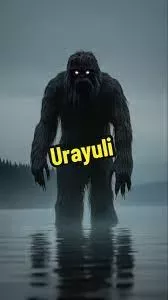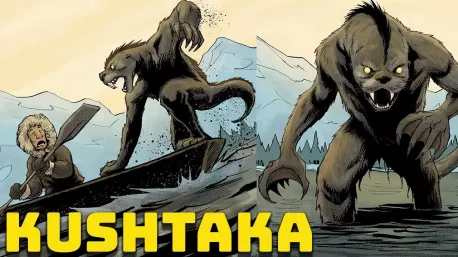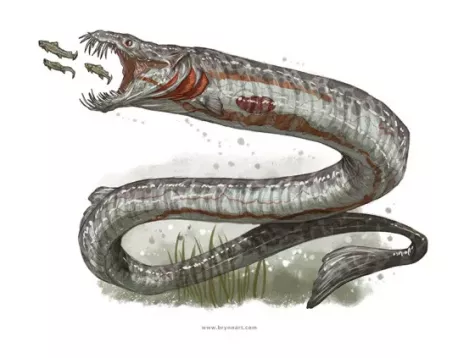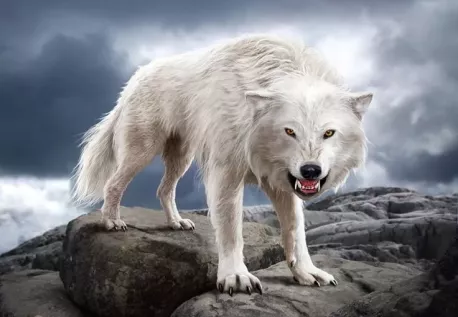Results: Urban Legends by State Part 1: Alaska
Published on 03/29/2025
Going down a brand new series here in alphabetical order. This is for Alaskan Natives

QUESTIONS
GO to COMMENTS
Comments
1.
1.
Urayuli aka Hairy Men are allegedly ape-like creatures that live in Southwestern Alaska. Stories of the Urayuli describe them as standing 10 feet tall with long shaggy fur and luminescent eyes. They are said to emit a high pitch cry, resembling that of a loon. Their long, lanky arms have been described as reaching down to their ankles. It is said the Urayuli are transformed children who become lost in the woods at night. It is possible that this tale was started to keep children indoors at night. Have you ever heard of this urban myth?

Yes
9%
186 votes
No
68%
1431 votes
Undecided
7%
142 votes
Not Applicable
16%
341 votes
2.
2.
Kushtaka are shape-shifters capable of assuming human form, the form of an otter and potentially other forms. In some accounts, a Kushtaka is able to assume the form of any species of otter; in others, only one. In some stories, Kushtaka are cruel creatures who take delight in tricking Tlingit sailors to their deaths. In others, they are friendly and helpful, frequently saving the lost from death by freezing. Kushtaka can be warded off with copper, urine, dogs and fire. It is said they emit a high pitched, three part whistle in the pattern of low-high-low. Have you heard of this creature?

Yes
7%
139 votes
No
71%
1492 votes
Undecided
6%
120 votes
Not Applicable
17%
349 votes
3.
3.
Qalupalik or Qallupilluit is a half-human, half-aquatic creature from Inuit folklore, often described as having green skin, long hair, and long fingernails, who is said to snatch children who disobey their parents or wander near the shoreline. They lurk under the water in the Arctic regions of the world, living along the coast. The Qallupilluit hunt along the ice floes, kidnapping children that wander too close. One strategy they use for hunting is to emit an ethereal hum that will draw children closer to the water so they can be pulled in. Accounts vary as to what actually happens to the taken children. Some versions say that the child is simply devoured, while others say that they are held in a stasis-like state and used to fuel the youth of the Qallupilluit. Have you heard of these sea creatures hybrids before?

Yes
8%
162 votes
No
70%
1468 votes
Undecided
6%
127 votes
Not Applicable
16%
343 votes
4.
4.
Tizheruk is a mythical creature that is said to live in the cold waters of the Bering Sea, near King and Nunivak Islands. The Tizheruk is a large serpent-like animal with a two-meter-long head and a tail with a flipper. It is feared by the local Inuit people, who claim that it can snatch people off piers without being noticed. The Tizheruk is a part of the Inuit religion and folklore. The name Tizheruk comes from the Inupiaq language and means "the long-tailed one". The Tizheruk is also known as Pal-Rai-Yûk or Tisikpuk in other dialects. The Inuit have a taboo regarding the Tizheruk and do not like to talk about it. They believe that it has supernatural powers and can cause misfortune or death to those who encounter it. Some stories say that the Tizheruk can change its shape or size, or even become invisible. Have you ever heard of this being?

Yes
6%
116 votes
No
72%
1515 votes
Undecided
6%
117 votes
Not Applicable
17%
352 votes
5.
5.
Waheela or Saberwolf. It is larger and more heavily built than normal wolves, with a wide head and proportionally larger feet, and with long, pure-white fur. The animal's hind legs are said to be shorter than the front legs, and the tracks show widely spaced toes. Witnesses describe it as being about 3.5 feet to 4 feet at the shoulder. Waheelas are never seen in packs so they are presumably solitary. Native legends describe the Waheela as an evil spirit with supernatural powers and describe it as killing people and removing their heads. It has been theorized that the Waheela is an Amphicyonid (a prehistoric carnivore of the Miocene and Oligocene), a Dire Wolf (A large wolf of the Pleistocene), a prehistoric hyena, or a completely new species of canine. The Waheela is native to the Nahanni or "Headless Valley" as it is known for ripping people's heads off. Have you ever seen this creature?

Yes
6%
136 votes
No
71%
1489 votes
Undecided
6%
130 votes
Not Applicable
16%
345 votes
COMMENTS


